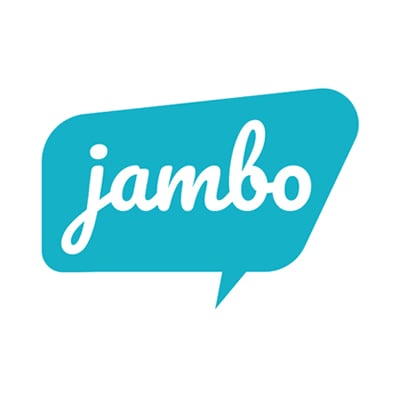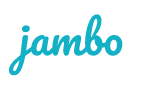
Compiling clear and insightful reports throughout your stakeholder engagement project is essential for tracking progress, gaining buy-in, and meeting your project objectives. Effective reporting helps you understand and manage stakeholder relationships and allows you to communicate outcomes to your team and organization. Stakeholder Relationship Management (SRM) software takes this a step further by streamlining the reporting process and providing actionable insights. Here are four ways stakeholder reports generated through SRM software can significantly enhance your stakeholder engagement projects.
Why do you need a stakeholder report?
Stakeholder reports serve multiple vital functions throughout a project. They help teams gain valuable project insights and share updates internally, ensuring everyone is aligned and informed. Reports are also essential for preparing briefings with managers, meeting regulatory requirements, and gaining approval from decision-makers. Additionally, they facilitate sharing information with stakeholders or communities and are invaluable when compiling comprehensive annual reports that summarize progress and impact.
4 reasons to use Stakeholder Relationship Management software for stakeholder reports
Creating effective stakeholder reports is crucial for building trust and ensuring project transparency. Here are four compelling reasons to use Stakeholder Relationship Management (SRM) software to streamline and enhance your stakeholder reporting process.
1. SRM reports will help you and your team save time
With Stakeholder Relationship Management (SRM) software, reporting is much faster. Whether you need a report for a regulator, team meeting, or a management update. SRM reports can compile your required information in a structured and organized manner within minutes.
What's the difference between spreadsheet reporting and SRM reporting?
When using spreadsheets instead of an SRM, it's hard to keep your data consistent, making summarizing it for a report nearly impossible (not to mention the troubles that come from managing multiple spreadsheets and trying to track down the latest versions).
Spreadsheet reporting can take substantial time to compile, but with an SRM, you can quickly and easily report on anything you've logged.
Discover reasons why it's time to stop using spreadsheets for stakeholder engagement→
Fast reports for government departments
For those in government who need to meet a Freedom of Information (FOI) request, Access to Information and Privacy (ATIP) request, or even just an information/status request, SRM reporting make it easier to pull what you need, including any supporting documents, to meet expectations quickly and effectively.
2. SRM reports will help you improve transparency
How you choose to share your stakeholder information will affect your ability to build trust in your project and with your stakeholders for better relationships in the long run, so project transparency should never be overlooked.
For your stakeholder engagement reports to meet transparency expectations, you need to ensure you've included all the requested information in an organized and understandable summary.
Note: It's important to consult with different groups and individuals regarding their reporting expectations to ensure you're building reports that meet their needs.
Transparency helps build trust
These SRM reports help keep everyone informed and included with timely updates from your organization, so there's no breakdown of trust over missing information or confusing summaries.
3. SRM reports will help provide valuable updates and overviews
Whether someone has asked for specific updates or needs a project overview to prepare for an upcoming meeting, SRM reports will help you roll up your data to understand what's happening in your project and with your stakeholders.
For example, you might need to know which project stakeholders care about a particular issue or how many conversations your team has had about a specific interest within a set time. An SRM report can help you answer these questions easily, so you and your team know what's happening and where to focus resources.
Your issues management needs to be a team focus
When it comes to your issues management, you need to work closely with your team to monitor, understand and resolve your stakeholder issues, as it's crucial for your project risk management. In our SRM, Jambo, you can run reports to gain a high-level overview of your issues to help you understand which ones are high risk and low risk, to ensure you and your team know what needs your attention.
4. SRM reports will help you lower your project risks
Managing a team with multiple team members engaging with stakeholders can be challenging to keep track of everything. SRM reports will help you understand who's being engaged, what kinds of conversations are being had, the issues being raised, the commitments made to stakeholders and more. With this information available in reports, you lower your project risks by understanding what's happening (including your liabilities), which will help you make better decisions, prepare resources and make strategic adjustments to your stakeholder engagement plan.
An SRM helps to keep your data centralized and safe
You also lower your risks by using an SRM that centralizes your information. This way, you always know where all your data is located and never have to worry about what happens to a team member's information if they leave the organization, because you know it's all logged and available in your SRM. This allows you to utilize and continue reporting on all the data, even after someone has left the team.
Read our discovery post on the 11 benefits of centralizing your stakeholder data→
Final thoughts: Are all SRM reports the same?
It's clear that stakeholder reports can benefit your stakeholder engagement project, but it's important to note that not all SRMs are made equal. Every reporting benefit and feature we mentioned in today's blog is available in our SRM, Jambo, but won't necessarily be available in other SRMs on the market. To find the best SRM for your team's needs, consider doing your research.
Delve into our guide on stakeholder relationship management software and discover the benefits→
How to choose the best SRM? Free checklist!
To help you choose the best Stakeholder Relationship Management (SRM) software for your organization, we created this free checklist to help guide your research. This checklist includes over 30 questions to help you understand which features to consider in your ideal SRM software.









